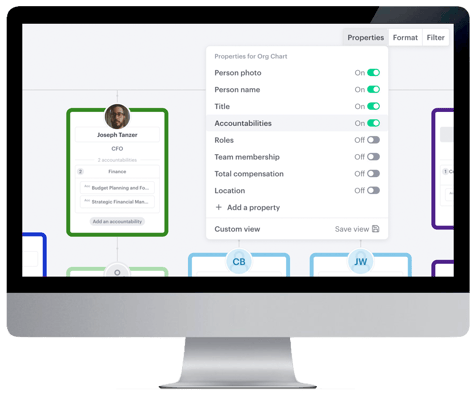Operational alignment is a straightforward concept that is simultaneously difficult to master.
Businesses across all sectors encounter alignment challenges at some point in their lifecycle. Those that experience rapid growth are particularly prone to operational alignment shortfalls, as the roles and responsibilities of each department are constantly in flux during these growth periods.
 Operational alignment shortfalls can result in challenging indirect paths to reach desired goals.
Operational alignment shortfalls can result in challenging indirect paths to reach desired goals.
Fortunately, organizations can leverage the concept of operational alignment in order to move toward company goals, overcome various challenges, and achieve sustained success within their respective market.
However, in order to accomplish this, organizational leaders must understand the alignment barriers that stand in their way and be committed to achieving interdepartmental synergy.
With that in mind, the team at Functionly has created this in-depth guide to operational alignment. Below, we clarify what this concept is, identify some common causes of alignment struggles, and outline the benefits of investing in operational alignment.
What Is Operational Alignment?
 Functionly includes the ability to view accountabilities on a chart - understanding who will carry out which task is an important part of operational alignment.
Functionly includes the ability to view accountabilities on a chart - understanding who will carry out which task is an important part of operational alignment.
Simply put, operational alignment is the process of determining how your organization will move from where it is currently to where it hopes to go. It is the plan that outlines who will carry out which tasks so that the company can achieve its vision.
At the more granular level, operational alignment details the responsibilities of each team or department. It defines the roles of these entities and also connects those responsibilities with the overarching objectives of the business.
An operational alignment strategy helps all employees understand how they fit into the organization and also provides meaning for the day-to-day tasks they carry out.
Why Teams Struggle with Alignment
As a business leader, you have undoubtedly experienced alignment issues firsthand. Spotting these issues is easy enough. All you have to do is look for signs such as:
- Friction between teams
- Ineffective or total lack of collaboration
- Dips in productivity
- Decreases in staff morale
- Frequent instances of miscommunication
While determining whether you have an alignment issue is not all that difficult, discovering what is causing the problem is another story entirely. Still, there are a few common culprits that are typically the cause of or contributors to team misalignment.
You may experience misalignment if:
Your Organization Is Not Using “Systems Thinking”
Peter Senge, a senior lecturer at MIT’s Sloan School of Management, is famed for his work on learning organizations. While he is best known for his “5 disciplines” of a learning organization, his work also speaks to the importance of operational alignment.
Senge said: “Vision without systems thinking ends up painting lovely pictures.” This statement is a prime illustration of his belief that businesses need to take a systematic approach toward achieving organizational goals.
What good is a revolutionary vision if you have not created a roadmap for moving toward it? Even if you have created such a roadmap, does your team understand your plan for achieving that vision? If not, then you are bound to encounter alignment issues.
Team Members Do Not Understand the Company Vision

Speaking of your team members and their understanding of your vision, it is critical that you keep them in the loop. When sharing your vision, you must work to help them understand their roles.
Remember, your employees are not viewing their responsibilities from the same lens that you are. Any messaging and communications regarding your vision must relay that they are valued members of the team and critical to the company’s success.
Effectively relaying your vision to your staff serves several purposes. First, it will help improve employee buy-in. Additionally, it will boost morale and increase the productivity of your team. This is because your staff will better understand both their own responsibilities and how their performance is helping the company reach its goals.
The Business Structure Is Not Clear
Does your business use an organizational chart or similar resource to explain the structure of the organization to team members? If not, then it is probably time to create one. Otherwise, entry and mid-level staff may not clearly understand your business structure and how they fit into it.
An org chart paints a clear picture of where each employee stands in the business hierarchy. It outlines what teams individuals are a part of, who they should report to, etc. A well-designed org chart will also encourage collaboration between departments and improve operational alignment.
Example org chart in Functionly.
Benefits of Achieving Operational Alignment
Achieving operational alignment should be at the top of your goals list for the coming year. By accomplishing alignment across your entire company, you can unlock numerous benefits, including:
- Increased organizational agility
- Improved employee engagement
- Reduced resource waste
- Enhanced oversight and governance
- Less friction for customers
- Optimized resource visibility
- Improved staff morale
- Enhanced company culture
Misalignment in the workplace breeds confusion. It also sets the stage for resource waste, missed deadlines, compliance issues, and decreased employee morale.
Conversely, an organization that achieves alignment will operate like a finely tuned machine. All team members and departments understand their role within the company and their importance to your vision.
Ultimately, becoming well aligned will increase productivity and profitability, thereby setting the stage for future growth.
Access More Business Org Resources
Would you like to learn more about high-level business management concepts like operational alignment? If so, then you should check out Functionly’s Orginometry content page.
Our team tackles popular topics like scaling virtual organizations, developing org charts, and more. We also have a podcast and video-based content so you can enjoy our great resources in your preferred format.
Start an operational alignment project today for free with Functionly.




